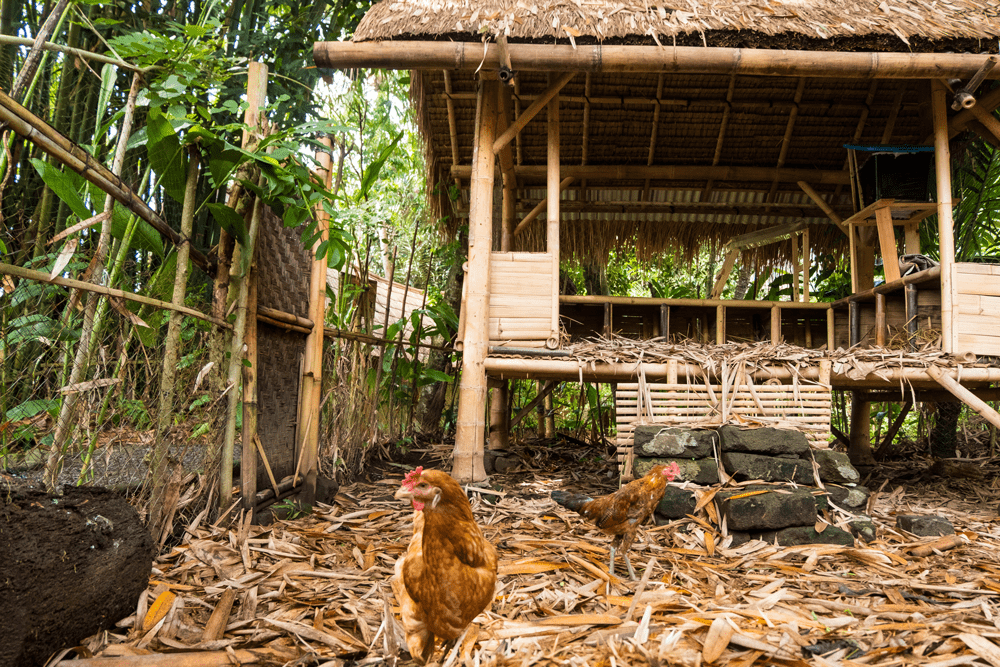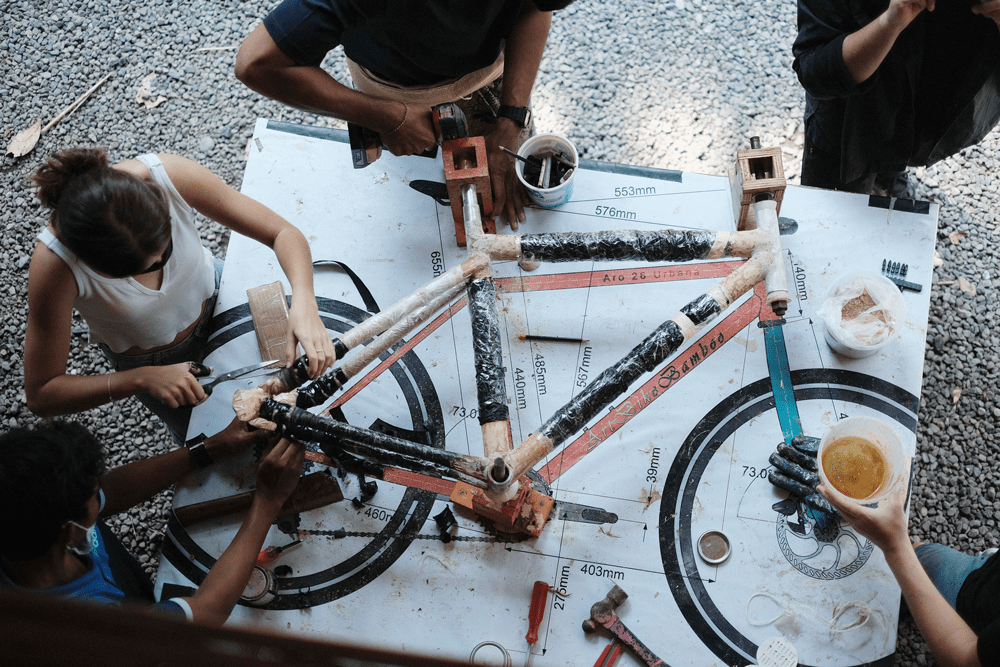As one of the world’s only schools built entirely from bamboo, Green School Bali learners spend a lot of time around this versatile plant. Inspired by mother nature, our curvilinear Heart of School, the heart of our nature campus and the main building on campus, appears as though it grew up from the ground. “The use of local natural materials creates an open-air environment that suits the climate and contributes to a strong local vernacular,” says the press release for the Stephen R Kellert BioPhilic Award, recognition Green School received in 2019. ”By offering students a place to learn, connect, and be immersed in nature, the younger generation is learning a new way of living and honoring the natural world. In this way, the school is not only a place where teaching happens, but the building itself becomes an integral part of the learning process“
Green School’s Heart of School features bamboo beams flowing and spiraling upward into three, interconnected nautili. Other buildings feature similar arching structures, structures that inspire much more creativity than a concrete box. “We could have built Green School out of concrete, but then what are we modeling for the future?” asks our Green School founder, John Hardy. “We could have built it out of very fancy recycled wood, but will there then be any wood for our grandchildren? So, we built it out of bamboo.”
In addition to keeping our minds open and inspired, anyone who spends time in our bamboo forest school will also internalize one very important lesson: how to bend like bamboo. Our students know there is strength in flexibility when navigating life’s challenges. But this isn’t all bamboo has to teach us – not by a long shot!
Starting in 2018, our early years students helped to plant a bamboo nursery on our on-campus permaculture gardens as part of the Green School Carbon Zero Program. The nursery is a place for our students to learn about the anatomy of bamboo as a sustainable material. Technically classified as a grass, bamboo is one of the fastest-growing grasses and thus fast replenishing. It can also produce 30% more oxygen for the atmosphere than other plants, which makes it ideal for clean air circulation.
Beyond knowing what it is and why to grow it, students quickly learn how to apply the versatile material to solve different problems. For example, after realizing how much plastic trash can accumulate in Bali’s rivers, Kurt, a primary school student from Sweden, used bamboo to create a floating barrier that will catch trash in the rivers of Bali before it reaches the ocean.

Our Middle Schoolers explore using bamboo as a sustainable building material to refurbish our Green School chicken coop – a perfect example of our REAL approach to learning. The students created a budget detailing their costs, including chicken feed, construction materials, and the chicks themselves. Alex, a student at Green School Bali, shares, “we then visited the student bank and filled out a loan form to borrow money, so we could pay for the chickens.” Once the hens started laying, the students paid the loan back egg-by-egg, selling them to the Green School community at the fortnightly Farmers Market. When it came time to remodel the coop, the students of course turned to bamboo. First, they made models from the recycled cupboards that they took from our Kembali recycling center. Next, they took measurements to examine the feasibility of the new bamboo structure. Finally, they built the chicken coop with the help of the school’s resident bamboo carpenter.

And in High School, our students have been learning how to use bamboo to make bicycles! Used as an earthquake and cyclone-resistant material by the construction industry, bamboo is strong like steel, but has the advantage of not emitting GES at all. Because of this, students work in teams and learn the fundamentals of bamboo bike building, including understanding the geometry of a bicycle, making bicycle frames, wrapping and polishing the bamboo, and final assembly. The entire process takes approximately 50 hours per bike.
Bamboo buildings, bikes, and water barriers – and we’re only scratching the surface of this incredibly versatile material! This year, for World Bamboo Day, we share our deep gratitude for our bounty of bamboo, and all that it has taught us.
If you’d like to explore more of our bamboo campus, you can watch our virtual campus tour, to hear more about bamboo, the creative vision behind our campus, and how we live our mission to make the world sustainable.



